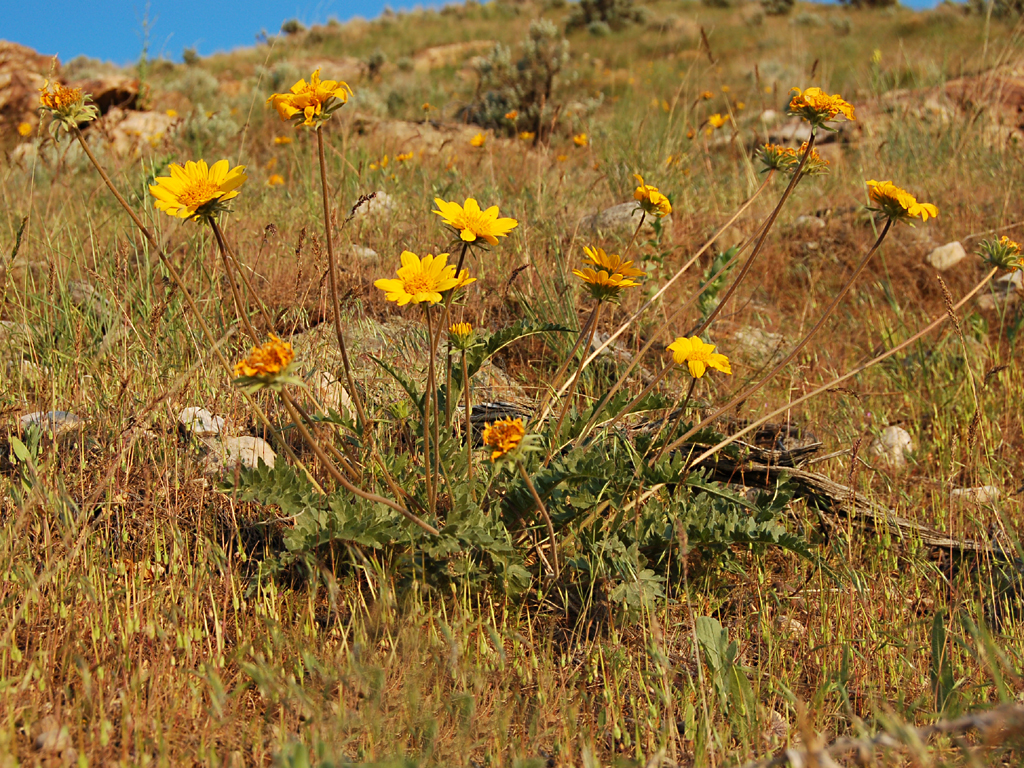|
Family: Asteraceae |
Perennials, 10-45(-100) cm (taproots slender or massive, thick- or thin-barked; caudices unbranched or multibranched). Stems erect, branched mostly from bases. Leaves mostly basal; opposite or alternate; petiolate (bases persisting as fibrils); blades (mostly pinnately nerved, sometimes 3- or 5-nerved) either rounded-deltate to triangular-deltate with bases sagittate or cordate to truncate and margins entire or crenate (B. subg. Artorhiza), or blades mostly elliptic, ovate, or lanceolate to lance-ovate or oblong and often 1-2-pinnatifid or -pinnately lobed with bases mostly truncate to cuneate and (if not lobed) margins usually crenate, dentate, or serrate, seldom entire (B. subg. Balsamorhiza), faces usually hirsute, hispid, pilose, puberulent, scabrous, sericeous, strigose, tomentose, or velutinous and gland-dotted or stipitate-glandular, seldom glabrous. Heads radiate, usually borne singly, rarely (2-3+) in ± corymbiform to racemiform arrays (peduncles ± scapiform, usually bearing 2+ leaves or bracts proximally or at mid length). Involucres mostly campanulate or turbinate to hemispheric, 11-30+ mm diam. Phyllaries persistent, 8-20+ in 2-3+ series (subequal to unequal, outer equaling or surpassing inner). Receptacles flat to convex, paleate (paleae persistent, conduplicate, at least at bases, chartaceous). Ray florets 5-21+, pistillate, fertile; corollas usually yellow to orange, rarely becoming brick red (B. rosea). Disc florets (15-)50-150+, bisexual, fertile; corollas yellow to orange, tubes much shorter than cylindric throats, lobes 5, ± deltate (style branches stigmatic in 2 barely distinct lines, appendages filiform). Cypselae obscurely prismatic, weakly 3-4-angled (faces usually glabrous, strigose in some B. careyana and in B. rosea); pappi 0. x = 19. |


